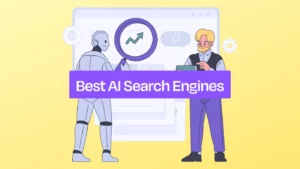Introduction:
In the quest for a sustainable future, the concept of achieving a zero-carbon footprint has gained significant traction. This blog post delves into the intricacies of what a zero-carbon footprint entails and explores how Artificial Intelligence (AI) is playing a pivotal role in transforming cities into eco-friendly havens.
Understanding Zero Carbon Footprint
A zero-carbon footprint, often called carbon neutrality, is an environmental concept aimed at balancing the amount of carbon dioxide (CO2) emissions released into the atmosphere with the amount of CO2 removed or offset. In simpler terms, it means that an individual, organization, or entity is not contributing to the increase of greenhouse gases in the atmosphere, specifically CO2, which is a major driver of climate change.
Analogy
Think of a zero-carbon footprint like a scale. On one side, you have the carbon emissions produced by activities such as driving cars, using electricity, and manufacturing goods. On the other side, you have efforts to reduce, remove, or offset those emissions, like planting trees, investing in renewable energy, and adopting energy-efficient technologies. The goal is to keep the scale balanced, so the emissions produced are equal to the emissions removed or offset, resulting in a net-zero impact on the environment.
Achieving a zero-carbon footprint is vital to combat climate change and limit global warming, as it means we’re not adding to the problem but actively working to mitigate it. It’s an essential step in preserving the planet for future generations and ensuring a sustainable and habitable environment.
Read More: What are Light Sensors – techovedas
AI Role in Zero-carbon Footprint
The imperative to transition towards a zero carbon footprint is more pressing than ever. As the global community grapples with the escalating threat of climate change, the need for innovative solutions has never been clearer. In this context, artificial intelligence (AI) emerges as a powerful ally. By harnessing the capabilities of AI, companies can not only navigate the complex terrain of carbon reduction but also uncover new avenues for sustainable growth.
Read More: 10 Free Online AI Courses From Top Companies
1. AI-Driven Urban Planning
One of the fundamental pillars of achieving zero carbon cities is reimagining urban planning. AI aids in designing cities that prioritize green spaces, pedestrian-friendly zones, and efficient public transportation. Advanced algorithms analyze data on traffic patterns, energy consumption, and population density to optimize the layout, minimizing the need for extensive transportation and reducing overall energy demands.
Read More: 7 Best Career Opportunities in AI and ML Engineering
2. Smart Energy Grids and Buildings
The energy sector is a significant contributor to carbon emissions. AI-driven smart energy grids dynamically manage the distribution of electricity, integrating renewable sources efficiently. Smart buildings, equipped with AI-based energy management systems, optimize energy usage by adjusting lighting, heating, and cooling based on occupancy and external conditions, contributing to substantial reductions in carbon footprints.
Read More: How AI Can Save Water, Control Pests Market Crops & increase income for Farmers
3. Intelligent Transportation Networks
Transportation is a critical focus area for achieving zero carbon cities. Moreover, AI enables the development of intelligent transportation networks, incorporating electric vehicles, optimizing traffic flow, and promoting sustainable commuting options. Additionally, machine learning algorithms predict traffic patterns, facilitating efficient routes and reducing congestion. Consequently, this leads to minimizing emissions from the transportation sector.
Read More: AI can clean Ganga & Predict Flood
4. AI-Enhanced Waste Management
Waste management is a significant contributor to carbon emissions if not handled sustainably. AI technologies facilitate efficient waste sorting through computer vision, identify opportunities for recycling, and optimize waste collection routes. This not only reduces the carbon impact of waste disposal but also promotes a circular economy by maximizing resource recovery.
Read More: Explained: What the hell is ChatGPT
5. Climate-Resilient Infrastructure
As cities face the challenges posed by climate change, AI assists in designing and implementing climate-resilient infrastructure. Machine learning models analyze climate data to predict potential risks such as flooding or extreme weather events, enabling cities to build infrastructure that can withstand these challenges while minimizing long-term environmental impacts.
Follow us on LinkedIn for everything around Semiconductors & AI
Conclusion:
The vision of creating a city with zero carbon footprint is an ambitious but necessary goal for a sustainable future. AI, with its transformative capabilities, is a key ally in this endeavor. From reshaping urban planning to optimizing energy grids and transportation, AI technologies are pivotal in building cities that not only reduce their carbon emissions but also contribute positively to the global fight against climate change. As we embrace the potential of AI in city development, we move one step closer to realizing the dream of EcoMetropolis 2030—a city that thrives harmoniously with its environment, leaving a minimal ecological footprint for generations to come.








